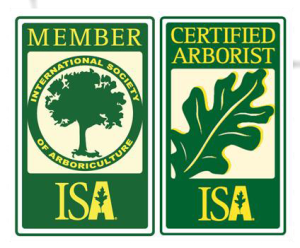Self-Guided Tree Safety Check
Scope - Observation Only
This is a ground-level safety check for routine conditions. It is not a professional assessment and does not determine if a tree is "safe". Do not climb or cut. If indicators suggest unacceptable risk, keep people and pets clear, and request an assessment by a certified arborist. If a limb or tree comes into contact with a utility line, call the utility company immediately.
How often should I check my trees?
At least once per month, after major weather events or after site changes that could have a stressful affect on your trees. If the trees are farther from regular areas of use, check quarterly.
Which trees should I check?
When doing a self-guided check of your trees, always start with the trees that you will be most vulnerable to if a limb were to drop or the tree were to fall. Typically these would be larger trees near structures, people, or both. Then move out from there to trees farther away. Don't forget to check smaller trees for signs of defects that could be hazardous years later.
How do I do a self-guided check of my trees?
Make sure you do your tree check in the daylight. You aren't diagnosing, climbing or cutting. Your gathering information and will be visually observing each tree from the ground at different positions around the tree. If you suspect a problem, take clear photos, makes notes, and decide whether to monitor or escalate.
Below, you will find some specific visual checks you can perform.
Four part visual check:
1.) Crown
• Dead or hanging limbs, especially over areas people use often.
• Branch unions with cracks, included bark, or unusual swelling.
• One-sided crowns or recent heavy thinning that looks uneven.
• Freshly broken tips or stubs from wind or cuts.
• Growth of fungal bodies or unusual discoloration along the branches and leaders.
• Dieback of the canopy tips, or untimely browning, or dropping of leaves.
2.) Trunk
• Long vertical cracks, new splits, bulges or seams.
• Cavities that hold water, soft wood or loose bark.
• Old pruning wounds that never closed and look dark or decayed.
• Oozing, sawdust, or insect frass repeatedly at the same spot.
• Long vertical strip of bark missing (Lightning strike)
• Fungal bodies growing on the side of the trunk.
3.) Root Zone & Base
• Mushrooms or conks on the trunk flare or at the base.
• Soil mounding, gaps, cracks or new heaving on one side of the tree.
• Exposed, severed, or crushed roots from trenching, parking or deliveries.
• Trees planted too deep with a buried root flare.
• The appearance of the soil holding too much water or not enough.
4.) Targets
• Where people park, walk, play, or enter a structure.
• Overhead power lines and service drop lines.
• Neighboring property frequently in use.
How will I know whether to monitor or escalate a tree problem?
Monitor if:
• Minor deadwood is away from areas people regularly use.
• Old pruning wounds are dry and unchanged.
• A slight lean hasn't changed and shows no soil heaving.
Escalate if:
• There's a fresh lean or noticeable change in lean.
• The base is cracked, trunk has a new split, or soil heaving on one side.
• There are large dead or hanging limbs over exposed targets.
• There are conks or mushrooms on trunk, at base, or on branches.
• There's recent root damage from trenching, hardscape or vehicle traffic.
• There are cavities with soft wood or holding moisture in trees near constant targets.
What to do next:
If indicators are visible, suggesting the possibility of unacceptable risk, keep people and pets clear, and book an independent assessment. The absent of the indicators mentioned here does not warrant safety.

